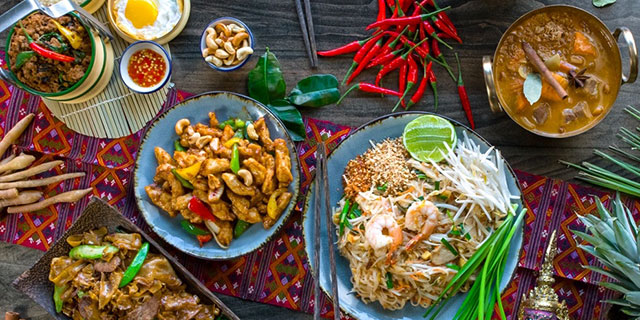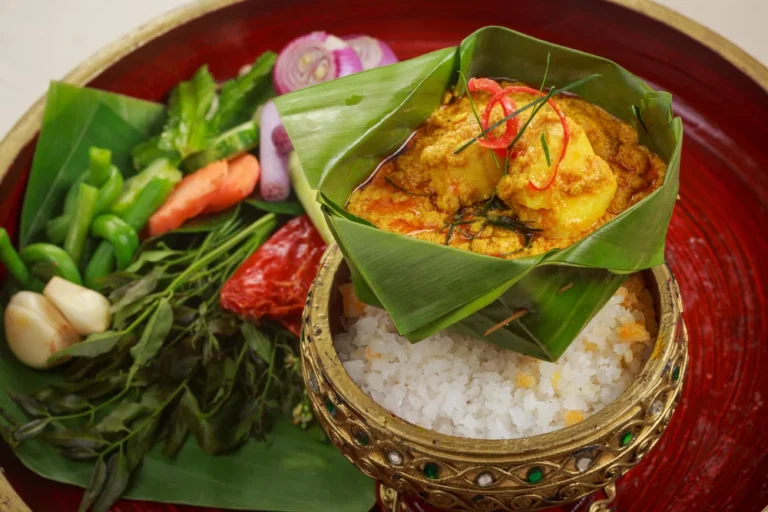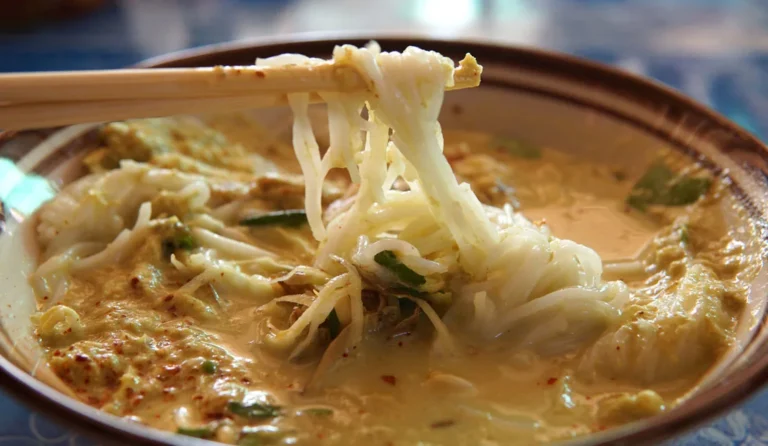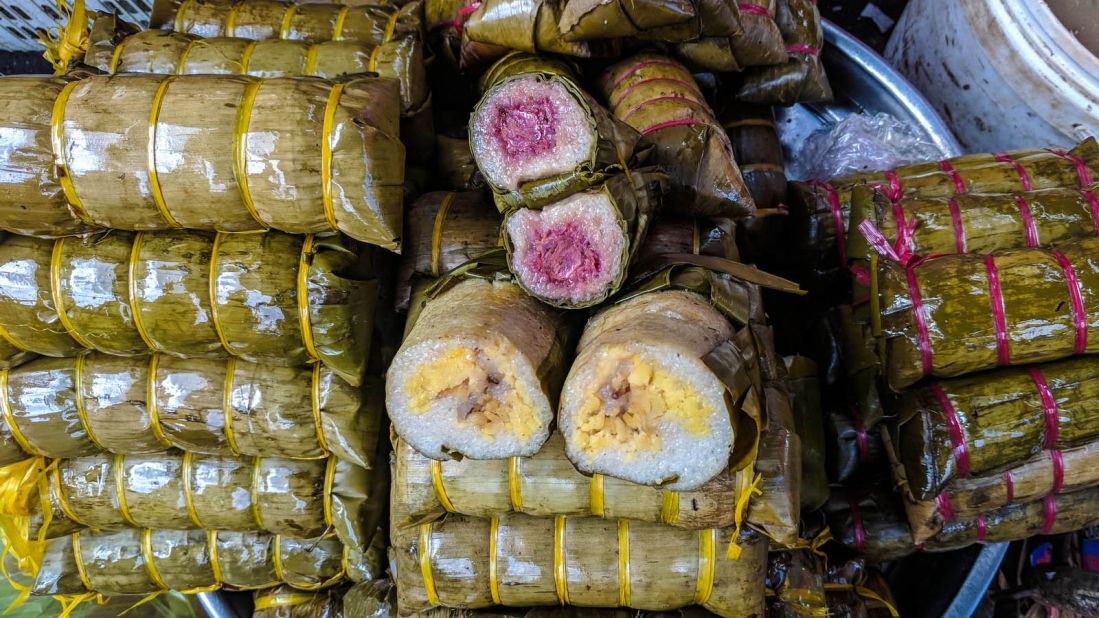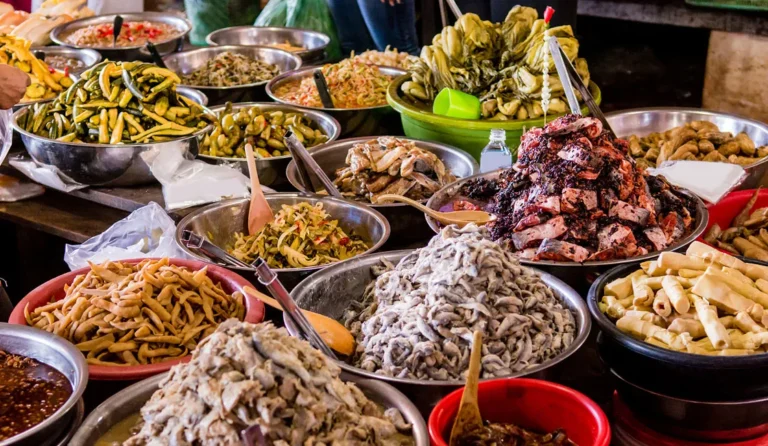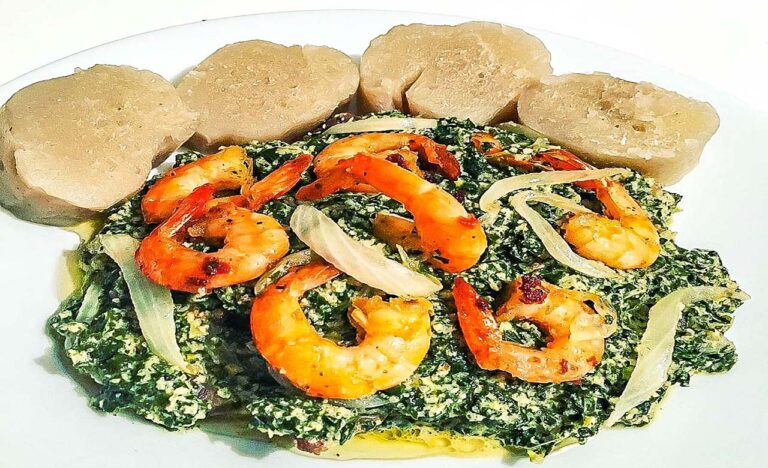Introduction: Thai Cuisine and Its Neighboring Countries
Thai cuisine is renowned worldwide for its complex flavors, use of fresh herbs and spices, and emphasis on balancing sweet, sour, salty, and spicy flavors. As a result of its geographic location, Thai cuisine has been influenced by neighboring countries like Laos and Cambodia. Both countries share borders with Thailand and have historically influenced Thai cuisine. Laos and Cambodia’s cuisine, like Thai cuisine, is driven by the use of fresh ingredients and a delicate balance of flavors.
Similarities and Differences: Thai, Laos, and Cambodian Cuisines
Although Thai, Laos, and Cambodian cuisines share similarities, each country’s cuisine is unique. Rice is a staple food in all three countries, and fish sauce, lemongrass, and chilies are commonly used ingredients. However, Thai cuisine is known for its bold flavors, while Lao cuisine is usually milder. Cambodian cuisine, on the other hand, has a heavier emphasis on freshwater fish and less use of herbs and spices.
How Thai Dishes Are Influenced by Laos and Cambodia
Thai cuisine has been influenced by Laos and Cambodia in various ways, including the use of specific ingredients and techniques. The use of sticky rice, which is a staple in Lao cuisine, is also common in northern Thai cuisine. Additionally, the use of curry pastes with lemongrass, galangal, and kaffir lime leaves, which are commonly found in Cambodian cuisine, is used in many Thai dishes. The use of fermented fish sauce, which is a staple in both Lao and Cambodian cuisines, is also common in Thai cooking.
Popular Thai Dishes with Laos and Cambodian Influences
One popular Thai dish that has been influenced by Lao cuisine is larb, a spicy salad made with minced meat, toasted rice, and fresh herbs. Another dish with Lao influences is nam prik, a spicy dip made with chilies, garlic, and fish sauce served with vegetables. Cambodian influences can be found in Thai dishes such as som tum, a spicy green papaya salad, and kroeung, a curry paste made with lemongrass, galangal, and kaffir lime leaves that is used in dishes like tom yum soup.
Unique Ingredients and Techniques in Thai Cuisine
Thai cuisine is known for its use of unique ingredients and techniques such as the use of fresh herbs like cilantro, basil, and mint, and the use of coconut milk to add creaminess to curries. Thai cuisine frequently uses wok cooking, a high-heat technique that requires quick cooking to retain the texture and flavor of the ingredients. Another hallmark feature of Thai cuisine is the balance of sweet, sour, salty, and spicy flavors.
Conclusion: Thai Cuisine and the Influence from Its Neighbors
Thai cuisine is a vibrant and complex cuisine that has been influenced by its neighboring countries like Laos and Cambodia. These influences can be seen in the use of specific ingredients and techniques. While Thai cuisine has its distinct characteristics, it has been shaped by its location and cultural influences. The result is a cuisine that is rich and diverse, with a unique blend of flavors and textures that are unmatched anywhere else in the world.

